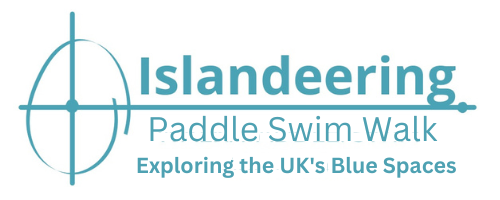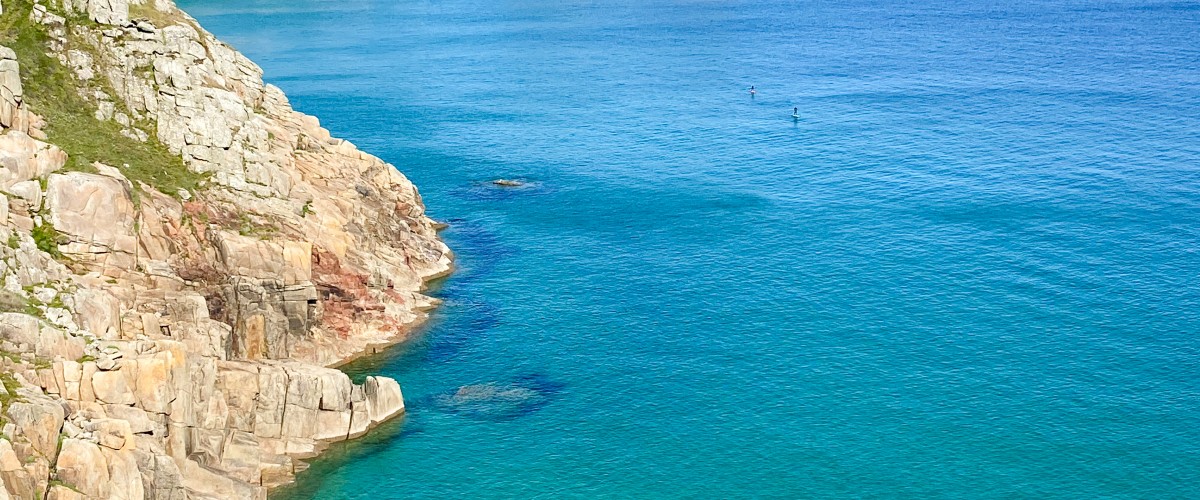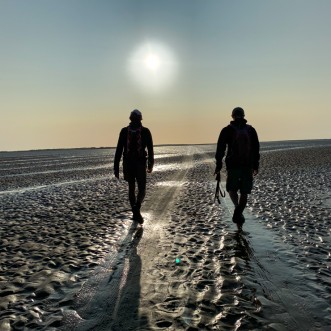Besides the wind (read our blog on wind), tides are the next big factor when planning a paddling trip to the coast or estuary. Here are our top tips for understanding tides and paddling safely in coastal waters.
- Always wear a personal flotation device (PFD) and a quick release belt leash when paddling.
- Use tide times and tables to plan all coastal and estuary paddles. These detail the tide times, the height of the water and whether it’s a spring or neap in specific locations for any day of the year. Local tide tables can often be purchased in coastal villages and towns and the BBC provides free on-line 5 day tide tables – see here
- Most places on the UK coast experience two flood tides leading to high tide/water on a beach and two ebb tides that lead to low tide/water on the beach every day, or 24 hour and 50 minute period to be precise, and its these times that are detailed in the tide tables.
- The tide tables also include symbols of the moon phase which is important for understanding the extent of the tide. A full or new moon has the largest impact on the tide and generates a spring tide which floods higher up the beach at high tide and ebbs further away from the beach at low tide. Spring tides have no relation to the spring season and occur twice EVERY month. Spring tides are often the only tides where it is possible to paddle to the head of tidal creeks and estuaries. A crescent moon represents the first and third quarter of the monthly lunar cycle and leads to neap tides where the tide doesn’t flood up the beach so high or ebb out as much. For the paddler it’s important to know that considerably higher volumes of water move between high and low tides on spring tides compared to neaps. For this reason neap tides are more preferable for point to point paddles along the coast or at the mouth of estuaries. Neap and spring tides also affect the height of high and low water which are also mentioned in tide tables. For some paddles in our SUP SW book a trip may only be feasible when the high water is a certain depth, so you will need to look at the tide times to see what days high water is deep enough. Technically speaking a spring tide exists on the day of the month when the tide is at its highest which is often 1-2 days after a full and new moon. However, for the purposes of our SUP SW book, when we refer to “springs or neaps”, we refer to the period of time usually 2 days before and after a spring or neap tide to maximise the benefit of these tides.
- The direction of flow of tidal water is also important to know. We have discussed that water moves up and down the beach or estuary in relation to times of high or low water but for most point to point paddles along the coastline the water flows laterally west to east on the flood tide and reverses on the ebb. Understanding this will assist the paddler when choosing the direction and timing to take when paddling. In the special notes section of each coastal paddle we give the best tidal window for the route and suggested direction of travel for tidal assistance. As with all natural systems, there are places along our coast that do not conform to the generalisations we have mentioned here, so it’s always best to seek local advice from a SUP school or the RNLI.
- The speed of tidal flow is another factor to consider and depends on the stage of the tidal cycle. The time between any high tide and low tide is just over 6hrs. At high tide and low tide themselves the flows are generally at their lowest and this is often referred to as slack water. This is generally a good time to paddle. As the tide cycle shifts from high tide to low tide the ebbing tide initially flows slowly and then builds up speed as it approaches the mid ebb tide which is the fastest flow. After this the flows slow again towards low tide. The same is true for flood tides. For the beginner the mid ebb or flow tide is one to generally avoid, especially around headlands or over reefs and ledges, as turbulence and challenging conditions occur that can be easily avoided. Mid ebb and flood tides on springs will be even more turbulent and challenging, compared to the same on neap tides when less water is moving around.
- A further tidal feature to be aware of is a rip current. The tide’s rise and fall is not strictly a flow of water, more a movement up and down. As waves break on the beach a rip current is formed where water returns from the breaking wave through a narrow stream. Rip currents are always very localised and more often occur near river mouths, sandbars and jetties that help funnel the returning water back out to sea. Generally, the bigger the waves, the stronger the rip current. When standing on a beach, you can often spot these rip currents by watching the lines of the waves come into shore, the gaps in the line of waves where the waves do not seem to break, is most likely a rip current. For a paddler, once spotted, they can be a quick option to leave the beach and avoid the breaking waves around you but for the beach swimmer the powerful currents can take you out beyond the breaking waves and are best avoided.
Overall, for beginner paddlers, we recommend the following:
- Avoid spring tides when the speed of the water can be as much as twice that of a neap tide
- Avoid mid tides where faster flows may lead to more turbulent water and less time to manoeuvre away from buoys and other obstacles.
- If paddling in South West England our SUP SW book gives the paddling window for the coastal routes we describe. We often suggest paddling ‘2 hrs either side of high tide’. This is a suggested optimum time to paddle due to the following factors:
- On a beach, it may avoid a long walk to and from the water’s edge
- In an estuary, it’s the time that water is high enough to cover the mud banks and avoids a slippery and muddy walk or access further up tidal creeks without the fear of getting stranded!
- In a bay, it’s the time when there is sufficient water to paddle in.
- On the coast, it often represents the bulk of slack high or low water and the best time to access many of the coast’s key features.
We have only provided the rule of thumb information here and tides and flows can be a lot more complex. Further reading for more advanced knowledge at British Canoeing can be found here– plus we always recommend talking to your local paddle instructor to see what courses they run.


